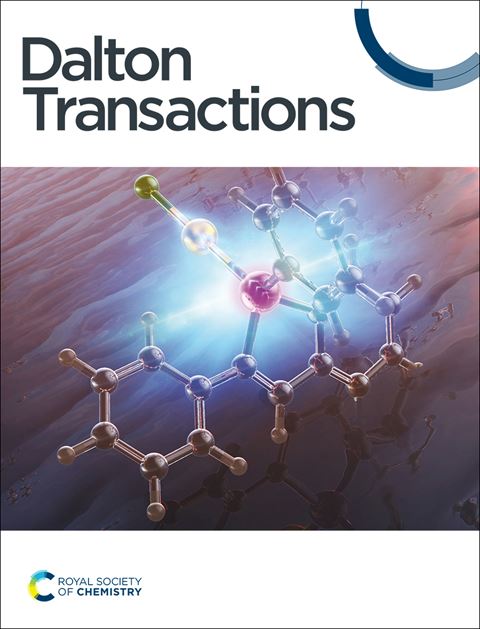Structural, optical, and magnetic behavior and the nucleation of a Griffiths-like phase in (Ca,V)-doped ZnO nanoparticles
IF 3.5
3区 化学
Q2 CHEMISTRY, INORGANIC & NUCLEAR
引用次数: 0
Abstract
Single-phase (Ca,V) co-doped ZnO nanoparticles (Zn0.93Ca0.04V0.03O, called hereinafter ZCVO) were synthesized via a modified sol–gel method. The hexagonal wurtzite symmetry of the ZnO phase nanostructure, belonging to the P63mc space group, has been confirmed through X-ray diffraction examinations using Rietveld refinement. No segregated secondary phases or Ca or/and V-rich clusters were detected. The TEM images clearly show the presence of nanoparticles exhibiting a diverse range of spherical shapes. The effect of co-doping on the optical band gap and crystalline quality was also investigated via photoluminescence (PL), UV–vis, and Raman spectrometers. The M–T curve suggests a tenability of magnetic coupling which was discussed within the context of three competing magnetic phases using the 3D spin wave model and Curie–Weiss law. The lack of saturation of the M–H loop at 10 K suggests the presence of both paramagnetic (PM) and ferromagnetic (FM) phases in ZCVO NPs. The bound magnetic polaron (BMP) model provides a plausible explanation for the observed magnetic phase transition. Moreover, a Griffiths-like phase was observed for the first time, to our knowledge, in co-doped ZnO nanoparticles. This novelty may stem from the interplay between the antiferromagnetic (AFM) and FM interactions of the Ca and V ions, which are acquired by oxygen deficiency.

(Ca,V)掺杂ZnO纳米颗粒的结构、光学和磁性行为及类griffiths相的成核
采用改进的溶胶-凝胶法制备了单相(Ca,V)共掺杂ZnO纳米粒子(zn0.93 ca0.04 v0.030 o,以下简称ZCVO)。采用Rietveld细化的x射线衍射方法证实了ZnO相纳米结构具有六方纤锌矿对称性,属于P63mc空间群。未检测到分离的次级相或Ca或/和v -富簇。透射电镜图像清楚地显示了纳米颗粒的存在,呈现出不同的球形形状。通过光致发光(PL)、紫外-可见和拉曼光谱研究了共掺杂对光学带隙和晶体质量的影响。利用三维自旋波模型和居里-魏斯定律讨论了磁耦合在三个相互竞争的磁相背景下的可行性。10 K时M-H环不饱和表明ZCVO NPs中同时存在顺磁性(PM)和铁磁性(FM)相。结合磁极化子(BMP)模型为观察到的磁相变提供了一个合理的解释。此外,据我们所知,在共掺杂ZnO纳米颗粒中首次观察到Griffiths-like相。这种新颖性可能源于Ca和V离子的反铁磁(AFM)和FM相互作用之间的相互作用,这是由缺氧获得的。
本文章由计算机程序翻译,如有差异,请以英文原文为准。
求助全文
约1分钟内获得全文
求助全文
来源期刊

Dalton Transactions
化学-无机化学与核化学
CiteScore
6.60
自引率
7.50%
发文量
1832
审稿时长
1.5 months
期刊介绍:
Dalton Transactions is a journal for all areas of inorganic chemistry, which encompasses the organometallic, bioinorganic and materials chemistry of the elements, with applications including synthesis, catalysis, energy conversion/storage, electrical devices and medicine. Dalton Transactions welcomes high-quality, original submissions in all of these areas and more, where the advancement of knowledge in inorganic chemistry is significant.
 求助内容:
求助内容: 应助结果提醒方式:
应助结果提醒方式:


